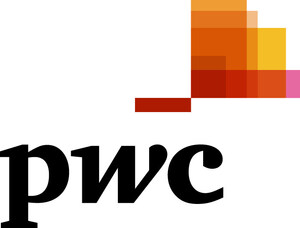SAN JOSE, Dec. 1, 2011 /PRNewswire/ -- Global cyber security spending is expected to reach $60 billion in 2011 and is forecast to grow at 10 percent every year during the next three to five years. The U.S. accounts for more than half of all deals globally, triggered by growing cyber threats and increasing awareness among both organizations and consumers of accelerating breaches and attacks, according to a new report from PwC titled, Cyber Security M&A: Decoding deals in the global Cyber Security industry.
(Logo: http://photos.prnewswire.com/prnh/20100917/NY66894LOGO )
Total deal activity since 2008 has exceeded $22 billion globally. In the first half of 2011, there were 37 deals accounting for over $10 billion in deal value, representing a 70 percent increase compared to full year 2010. Since 2008, the total investment in global cyber security deals has exceeded $22 billion, an average of over $6 billion in each year.
"Deal activity in cyber security is expected to continue to grow given the fragmentation of the market and the attractive growth outlook," said Barry Jaber, PwC's security industry leader. "Technology and IT companies are making acquisitions to differentiate their offerings while defense firms continue to do deals to diversify away from shrinking defense budgets."
"Against the backdrop of heightened awareness of hacks and deliberate attacks on institutions by semi-organized groups, the cyber security market is undergoing significant change and attracting investment from sectors that span technology, telecommunications, defense, professional services and financial investors," said Rob Fisher, PwC's U.S. technology leader for transaction services.
In most regions, the private sector accounts for the majority of cyber security spending, while the U.S. is the notable exception where government spending is almost equal to the private sector. The strong U.S. technology industry combined with the fact that the U.S. defense and intelligence budgets are significantly larger than in any other country are key market drivers.
"The U.S. is a unique market with significant cyber security spending in the public sector, particularly by intelligence and defense agencies," said PwC's Jaber.
The U.S. market leads in value with the majority of deals (over 50 percent) involving acquirers or targets based in North America. By comparison, Europe accounted for approximately a quarter of deal value and a third of deal volume over the same period.
"Growing threats and awareness, and changes in technology such as mobile devices and cloud computing are key drivers of spending growth in the cyber security market," added PwC's Jaber.
Other key drivers underpinning growth in cyber security spending include:
- Increasing cyber threats, both from new actors and new threat vectors (the paths that attacks can take).
- Greater vulnerabilities due to the more pervasive use of technology, particularly mobile devices and cloud computing.
- Increasing awareness by organizations and consumers of the threats and potential threats.
- Changes in technology driving product and service innovation of security solutions.
- Increasing regulation, particularly those enforcing the requirement to secure personal data.
- Changes in outsourcing; some organizations are increasingly relying on partners for security, while others are growing internal security spending to maintain greater levels of control.
About the PwC Network
PwC firms help organizations and individuals create the value they're looking for. We're a network of firms in 158 countries with close to 169,000 people who are committed to delivering quality in assurance, tax and advisory services. Tell us what matters to you and find out more by visiting us at www.pwc.com.
© 2011 PricewaterhouseCoopers LLP, a Delaware limited liability partnership. All rights reserved. PwC refers to the US member firm, and may sometimes refer to the PwC network. Each member firm is a separate legal entity. Please see www.pwc.com/structure for further details.
SOURCE PwC
WANT YOUR COMPANY'S NEWS FEATURED ON PRNEWSWIRE.COM?
Newsrooms &
Influencers
Digital Media
Outlets
Journalists
Opted In





Share this article